High Point, NC Pollen and Allergy Report for Summer 2023
Pollen Allergy Trends in High Point, NC
When is pollen lowest in High Point, NC?

February
Lowest month total PPM
Avg. PPM
When is pollen highest in High Point, NC?

April
Highest month total PPM
Avg. PPM
How does pollen in High Point, NC compare to North Carolina?
High Point has a lower average PPM than the state of North Carolina.
High Point yearly avg PPM:
North Carolina yearly avg PPM:
How does pollen in High Point, NC compare to the USA?
High Point has a higher average PPM than the USA.
High Point yearly avg PPM:
USA yearly avg PPM:
Is pollen worse this year in High Point, NC?
Spring 2023 was better than spring 2022.
Spring 2023 PPM:
Spring 2022 PPM:
Average PPM in High Point, NC
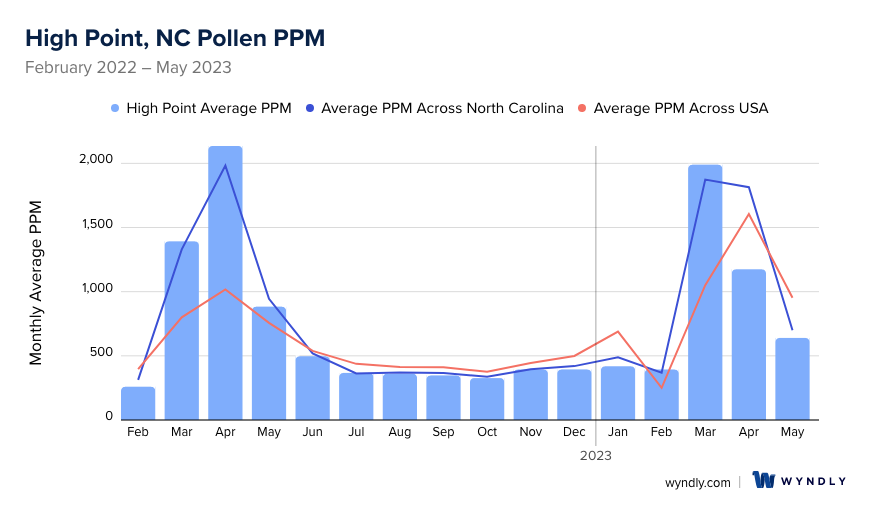
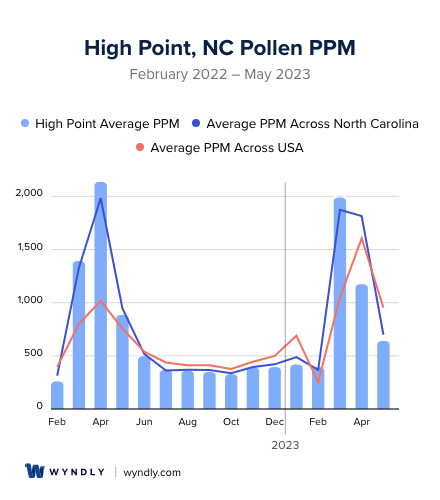
High Point, NC Pollen and Allergy Breakdown by Month
Grass
When is grass pollen highest in High Point, NC?
April has the highest grass pollen in High Point, NC with an average PPM of
When is grass pollen lowest in High Point, NC?
December has the lowest grass pollen in High Point, NC with an average PPM of
Tree
When is tree pollen highest in High Point, NC?
March has the highest tree pollen in High Point, NC with an average PPM of
When is tree pollen lowest in High Point, NC?
October has the lowest tree pollen in High Point, NC with an average PPM of
Weed
When is weed pollen highest in High Point, NC?
April has the highest weed pollen in High Point, NC with an average PPM of
When is weed pollen lowest in High Point, NC?
February has the lowest weed pollen in High Point, NC with an average PPM of
High Point, NC Pollen Monthly Breakdown by Pollen Type
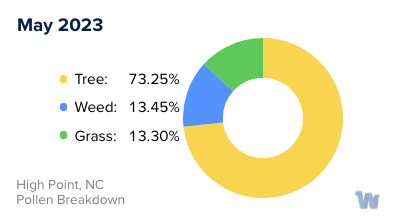
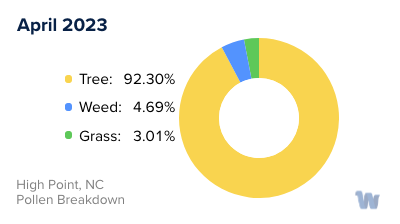
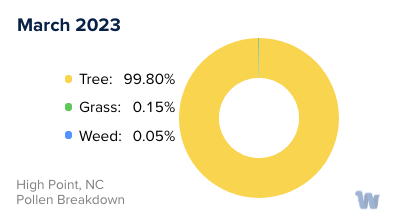
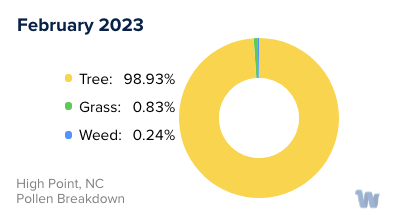
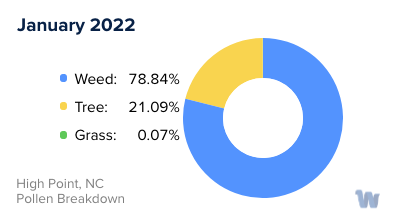
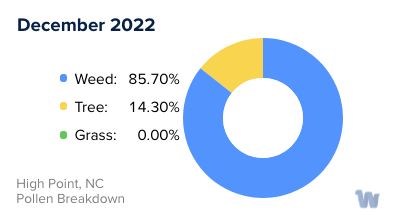
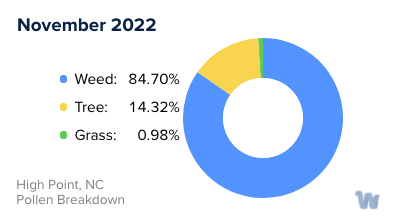
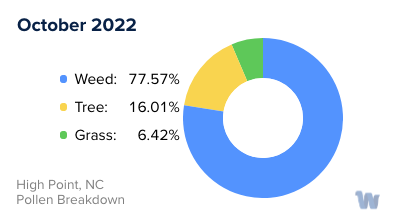
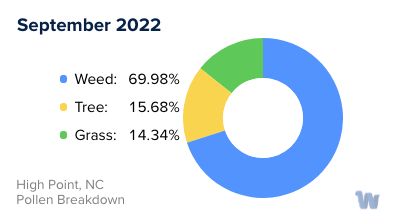
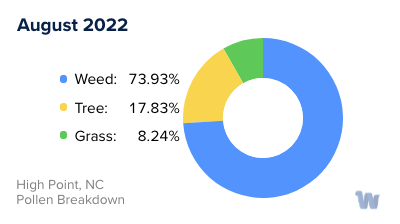
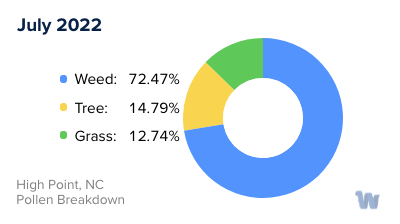
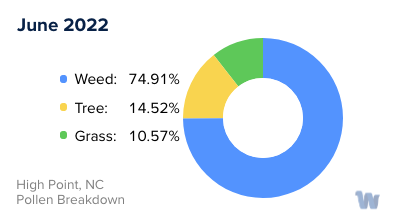
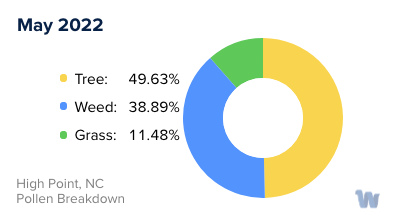
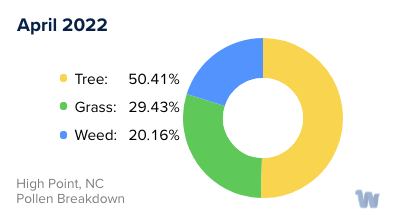
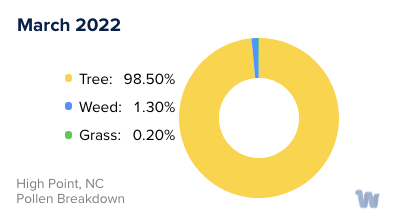
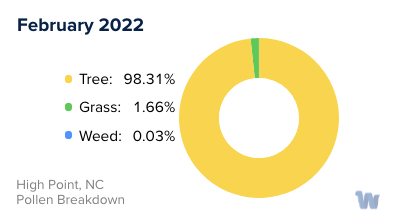
Pollen and Hay Fever in High Point, NC
Pollen allergies, commonly known as hay fever, are a significant concern for residents and visitors to High Point, North Carolina. They are primarily triggered by three types of producers: grasses, trees, and weeds.
The pollen season in North Carolina begins in spring, usually in late February or early March, when trees start releasing their pollen. Some of the most prevalent tree pollens in the area come from species such as River Birch, Hickory, Oak, American Beech, and Yellow Polar.
As we transition into the summer months, grass pollen takes center stage. Residents may find themselves affected by pollen from grass species such as Bermuda grass, Zoysia grass, Ryegrass, and Fescue grass.
As summer fades into fall, weeds become the main pollen producers. Ragweed, in particular, is a notable contributor during this time of the year. These allergies typically worsen in late summer and persist until the end of the allergy season.
Notably, the peak periods for pollen counts in North Carolina are in April, May, and September. During these times, the air is filled with microscopic particles that can trigger an array of symptoms in those sensitive to them. As such, those with pollen allergies may wish to consider their activities and plans during these peak months, perhaps preferring evening outings when pollen counts tend to be lower.
In conclusion, pollen allergies in High Point, North Carolina, vary by season and are mainly produced by a diverse array of trees, grasses, and weeds. By understanding the cycles of these producers, residents and visitors can better navigate the changing seasons while minimizing their exposure to these allergenic pollens.

